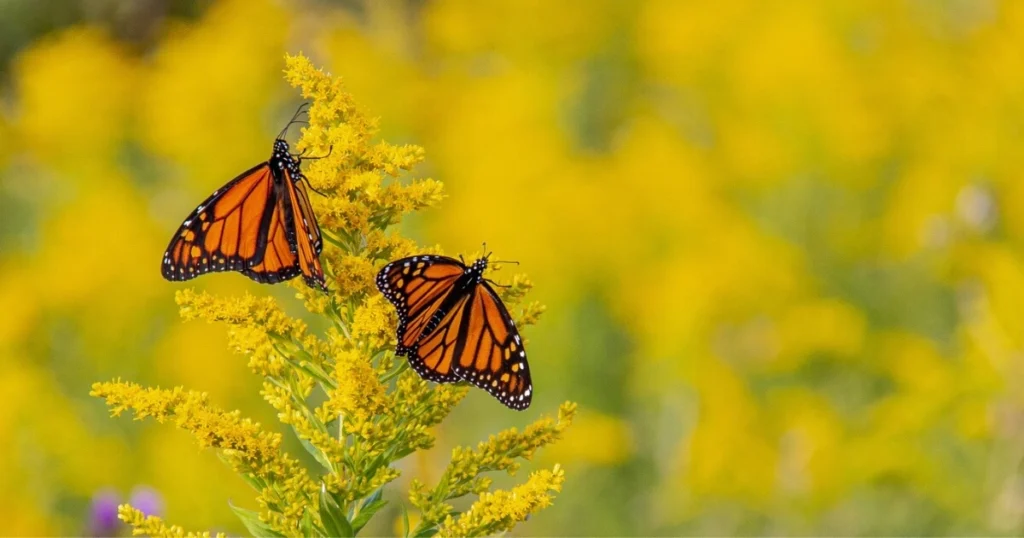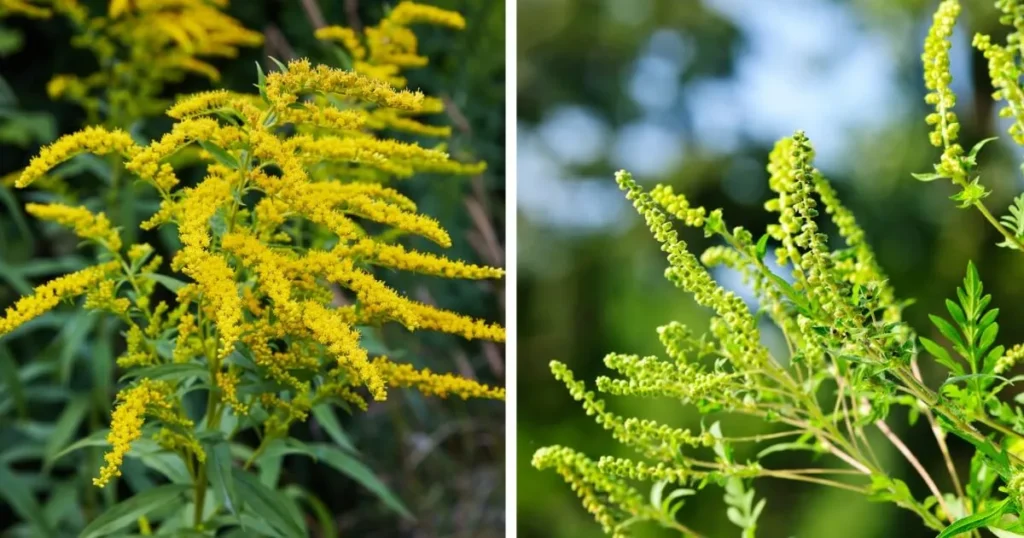
Photo by jmcormier101 / Getty Images
Itchy eyes, sniffy nose, and scratchy throat in late summer or early fall? Ragweed (Ambrosia sp.) is the likely source. But an important pollinator that doesn’t activate allergies is killed frequently in a case of mistaken identity: goldenrod (Solidago sp.).
Visible on roadways, pollinator gardens, meadows, and many other places with its tall, golden plumes, Goldenrod is a perennial, native plant species across Canada. A popular pollinator plant for insects like bees, moths, flies, beetles, wasps and butterflies, goldenrod also benefits animals like rabbits who enjoy the leaves of the plant, and many species of birds who prey upon the insects. The seed head of the goldenrod is showy, and adds wonderful texture to a fall/winter garden. It also provides ongoing food sources for birds and other animals through colder months.

Photos by Liudmyla Liudmyla (left) and Elenathewise (right) / Getty Images
Goldenrod or Ragweed?
There are many species of Solidago and Ambrosia native to North America, making some identifying features more difficult to test. For example, Ambrosia plants often have a purple hue in their stem, and Solidago are green; however, some Solidago also have hints of purple in their stems. The height of the plants varies greatly, and both can grow to 1.8 metres (6 feet).
Fortunately, the flowers of the two plants can make identification faster: goldenrods have showier, bright yellow blooms, whereas ragweed flowers tend to be less showy and are greener.
If you’re uncertain about which plant is on your property, take a photo and consider using a plant identification app on your smart device, or sharing with a local naturalist or gardeners group online!
